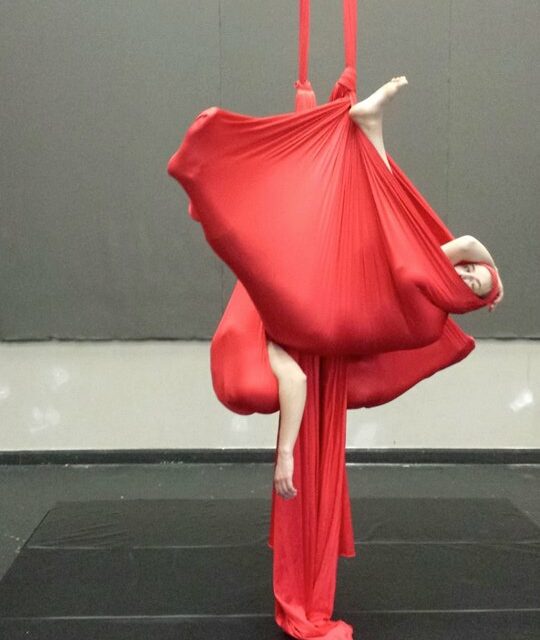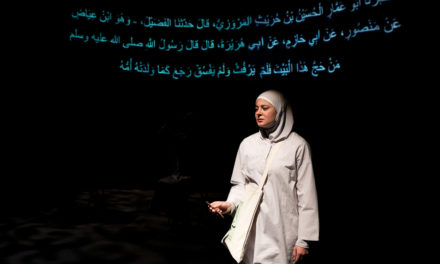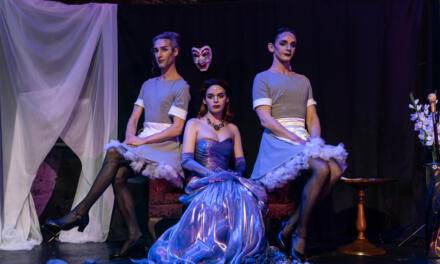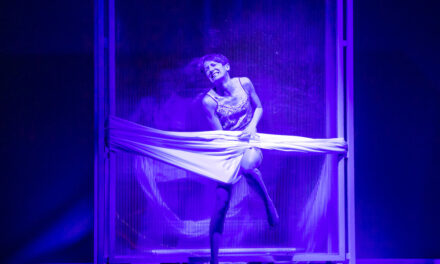Augustine’s Dream was presented in July 2019 at the Providence Fringe by AnomalousCo. An interdisciplinary theater collective, the troupe develops new productions working with director Kathryn Syssoyeva. The group focuses on movement, which is extended vertically through silks, trapezes, and harnesses. Where many aerial companies work with dancers, this group works with professional actors as well as actors in training – all of whom have an interest in physical theater.
Production Context
Augustine’s Dream is a devised piece inspired, in part, by a book called The Invention of Hysteria by Georges Didi-Huberman. It describes Dr. Jean-Martin Charcot’s study of “hysterical” female patients at the Paris Salpêtrière Hospital in the late nineteenth century. Since Charcot used the latest technology to document his teachings and techniques, we have photographs of his patients’ seizures: which were helpful to the actors and director in the development of characters. Charcot was known to present weekly public lectures of the characteristics of hysteria using wrought patients to demonstrate his views to an audience composed largely of men.
Scenic Breakdown of Augustine’s Dream
The play begins with the traditional knocks to the French employ to mark the onset of the performance. Female characters perform their illnesses to an audience, much as the Charcot’s patients must have done. The patients are sometimes resistant, and have to be removed – a walk-on role played by actor/teacher Alexei Syssoyev. Then, Gongs are used to mark the end of the hypnosis sessions.
The next scene, titled “Games in the Woods,” takes place in Salem, Massachusetts in the seventeenth century – during the period of the witch trials. Three girls onstage run, spin, and crawl on the ground. One has a convulsion, another prays uncontrollably. The famous trial of Susannah Martin, who pleaded not guilty to witchcraft follows this. By the end of her trial, she accepts her guilt and her punishment of hanging death. Notably, the actors’ behavior and reactions are reminiscent of the characters in the opening who are physicalizing hysteria.
Finally, “The Passion of Elizabeth” presents the character of Elizabeth of Spalbeek. A thirteenth-century mystic from the diocese of Liège who was also catatonic, she was awakened from her catatonia several times a day and brought to the chapel. She was exhibited to the religious pilgrims who came to pray to her. This could be potentially mirroring the scholars and doctors who observed the catatonic patients as a learning experience at Salpêtrière Hospital.
The Troupe AnomalousCo
Kat Hunsaker and Cassandra Smith, both students in the Theater Department at Dixie State University in Saint George, Utah join Kathryn Syssoyeva and Alexei Syssoyev in the troupe. Kathryn teaches Directing, Interdisciplinary Devising, History of Theatre and Dramatic Literature, Script Analysis, Theatre and Society, and Dramaturgy at the very same University. With them is Russian Diana Zhdanova, who is in her last year at a Theater Academy in Saint-Petersburg. Kathryn Syssoyeva and Alexei Syssoyev met Diana in the summer of 2018 when they choreographed a performance piece, The Biomechanics of Security, under the direction of conceptual artist Farrah Karapetian, in Saint-Petersburg.
Director Kathryn Syssoyeva
Although Kathryn’s interest in aerial theater is strong, other forms of theater appeal to her as well. In 2016, she developed “Classrooms without Borders,” a series of classes, research trips, and theater projects that focused on social justice. It too was a devised piece. Currently, she is directing her students in Caryl Churchill’s Love and Information. The lines in this production are also notably left solely to director Syssoyeva; no other characters speak, though they do make sounds as needed. In some of her directed circus-inspired productions, she has taught the performers how to speak the text.
Growth in The Form
Directors, actors, and theater companies have grown more interested in aerial theater and the ways in which it can heighten the theatricality of a play. It can be and has been used successfully in both musical theater, and text-based plays.
This article was originally posted at Capital Critics’ Circle and has been reposted with permission. To read the original article, click here.
This post was written by the author in their personal capacity.The opinions expressed in this article are the author’s own and do not reflect the view of The Theatre Times, their staff or collaborators.
This post was written by Jane Baldwin.
The views expressed here belong to the author and do not necessarily reflect our views and opinions.

















